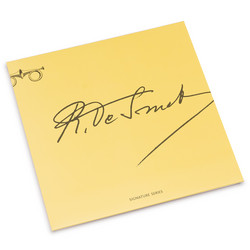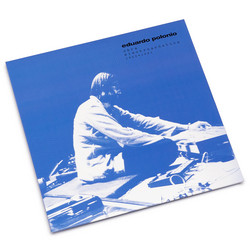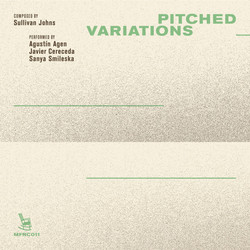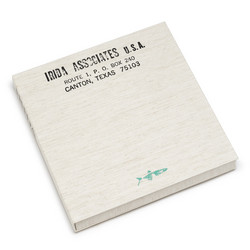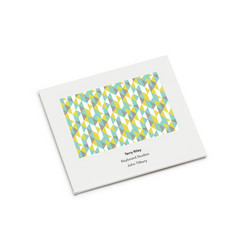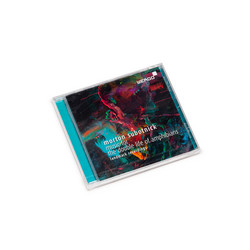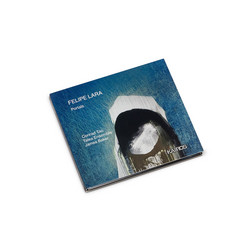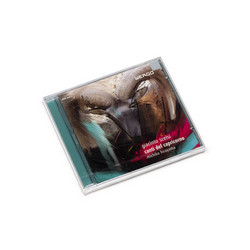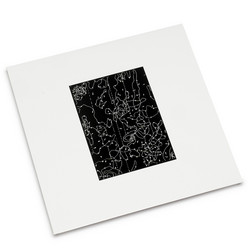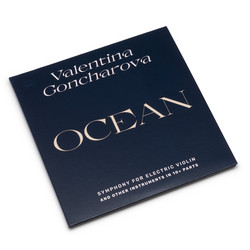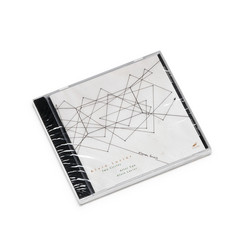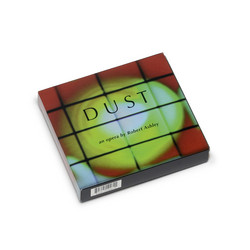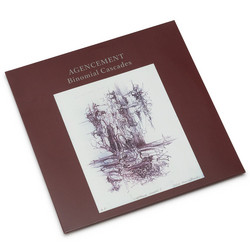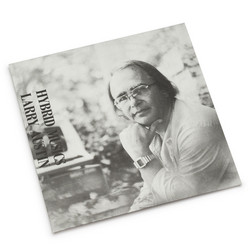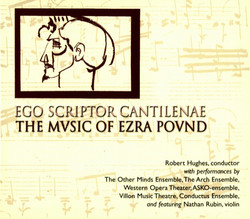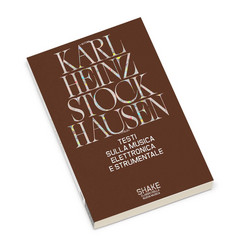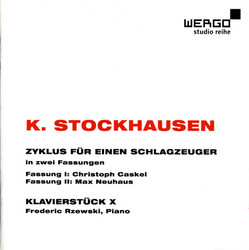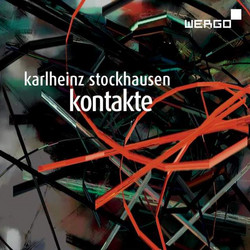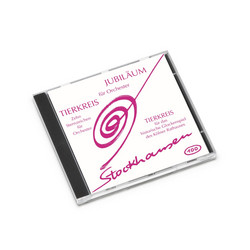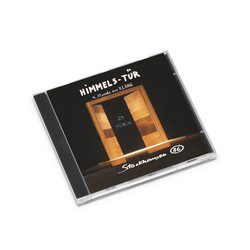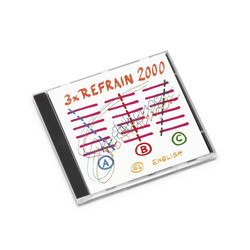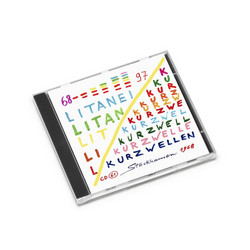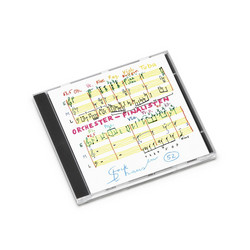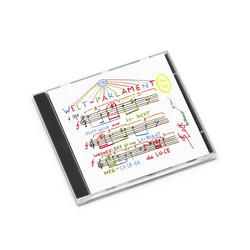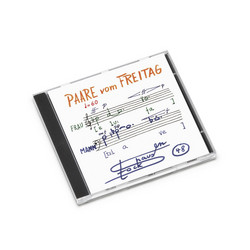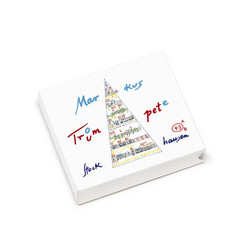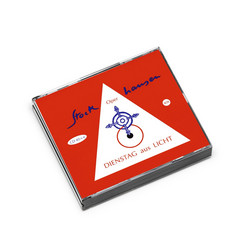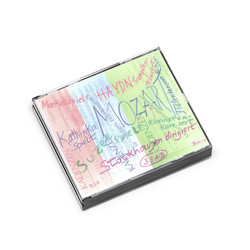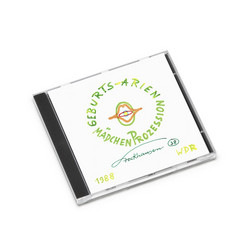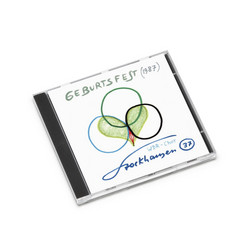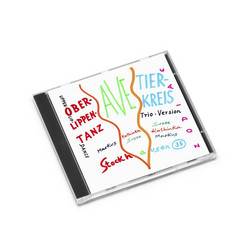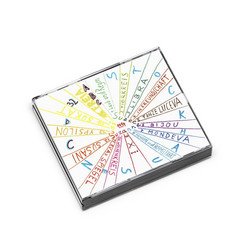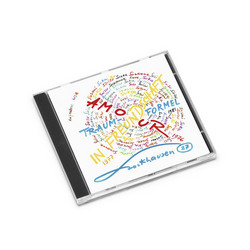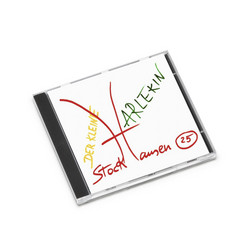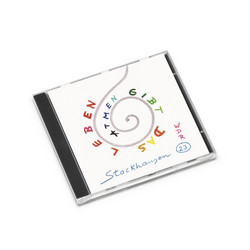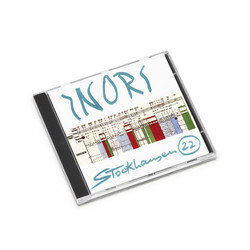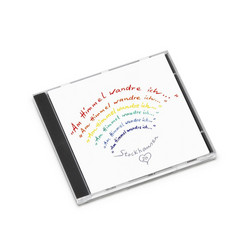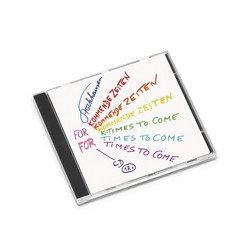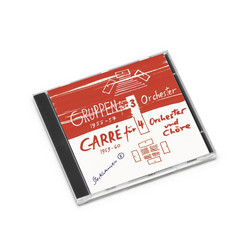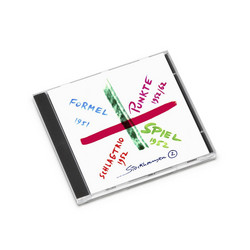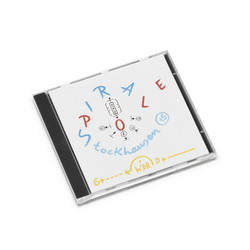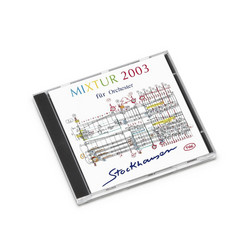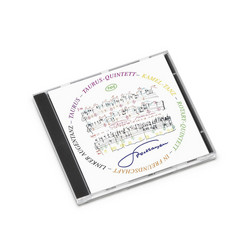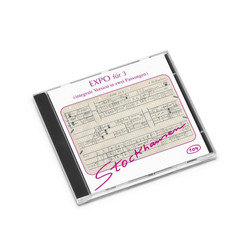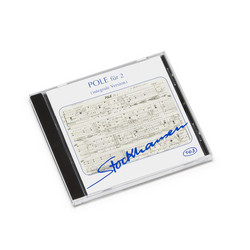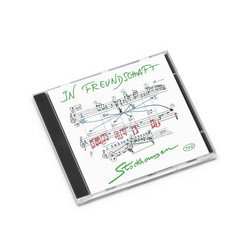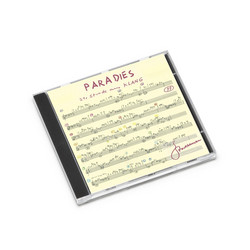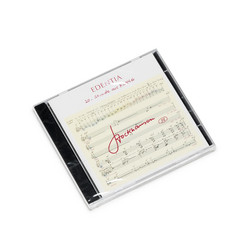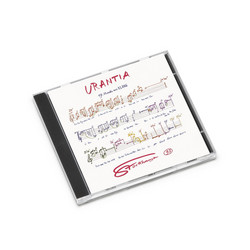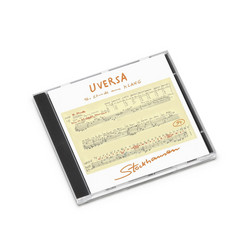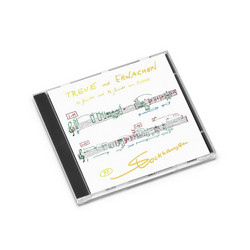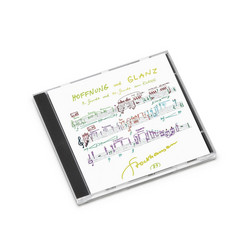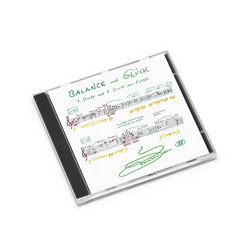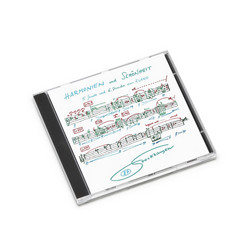*2022 Stock.* Karlheinz Stockhausen – “Mantra” was composed in 1970 and premiered in autumn of the same year at the Donaueschingen Festival. The work is scored for two ring-modulated pianos; each player is also equipped with a chromatic set of crotales (antique cymbals) and a wood block, and one player is equipped with a short-wave radio producing morse code or a magnetic tape recording of morse code. "The real basis for “Mantra” is a thirteen-note motif; formula, allotting each note specific characteristics regarding duration, rhythmics, intensity and so on. This thirteen-tone formula is the mantra. Each note determines a large portion of the work. “Mantra” consists entirely of a continual series of the formula, of the mantra, with superimpositions of itself. In each of the larger thirteen cycles – each one derived (expanded) from the characteristics of the thirteen singular notes – a different one of the mantric characteristics dominates. Each part of the mantra is reflecting itself, mirror-like, upside down, stretched, compressed, twisted. The mantra itself, though, doesn’t change throughout this, since a mantra, in the Sanskrit meaning of the word, cannot change once it has been received by the disciple.
The fast event before the end of the piece (which triggered my vision above with the wintry scene of moving people seen through an aquarium in Helsinki) is a compression of the whole work into a short duration, where all the expansions and transpositions are collected and displayed very fast in four layers). Stockhausen says: “In each of the thirteen large cycles of the work, each pianist tunes in a sine tone to the central pitch around which all the mantra transformations are centered. The first pianist presents the upper thirteen pitches of the mantra in succession, and the second pianist the lower thirteen pitches, the mantra-mirror. Every first and thirteenth pitch of each recurrence of the mantra is thus identical to the mirroring sine-tone; hence they sound completely consonant, and thus completely natural – like piano notes. Depending on the intervallic distance of the other mantra pitches from the mirror pitch of the ring modulation, the modulated notes sound more or less dissonant, and have spectra unlike the piano (minor seconds, minor ninths and major sevenths produce the most dissonant modulator sounds, octaves and fifths the most consonant). Hence one perceives a continual respiration from consonant to dissonant to consonant modulator sounds, resulting from the precisely tuned relationships between the modulating sine tones and the modulated piano notes.”
Stockhausen drew out the contours of “Mantra” in Osaka in May and June of 1970. He composed in his hotel room for three hours each morning, before heading for the German pavilion of the World Fair EXPO 70 and the spherical auditorium where he performed his music. Then in July and August of 1970, after spending time in Ceylon, Stockhausen worked out the score of “Mantra” at home in Kürten. “Mantra” was a breakaway in more than one way, since it also was the first fully notated score since “Carré”. In Michael Kurtz’s book “Stockhausen – A Biography”, you can read the following quote from a conversation between Jonathan Cott and Stockhausen, where Stockhausen says this about the beginning of “Mantra” as it occurred to him during a car trip from Madison to Boston in 1970: “I was sitting next to the driver, and I just let my imagination completely loose… I was humming to myself… I heard this melody – it all came very quickly together: I had the idea of one single musical figure or formula that would be expanded over a very long period of time, and by that I mean fifty or sixty minutes. And these notes were the centers around which I’d continually present the same formula in a smaller form… I wrote this melody down on an envelope.” It might also be interesting to see what the composer had to say about formula composition in an interview that Guido Zeccola conducted with Professor Stockhausen at the Electronic Music Festival at Skinnskatteberg, Sweden in June of 2000, reprinted here with the permission of Mr. Zeccola (Only the words of the Professor are reprinted here): “The idea of ‘formula’ was born as a reaction to my work in Osaka 1970. For five months I listened carefully to all works I had composed so far. I became very tired of the so-called Alea. Randomness had become more important than the work as such. In pieces like ‘Prozession’, ‘Spiral’, ‘Pole’, ‘Expo’ and even ‘Hymnen’ I couldn’t stand anymore the free improvisations that the instrumentalists did. That was when I began composing ‘Mantra’, which is the first composition based on a formula. After that I have developed this idea much further. ‘Formula’ is like the seeds sown by a man, a seed that fertilizes the woman. It amazes me to ponder the fact that a microscopic element, an incorporeal sperm, is able to fertilize another human being, to generate a new complex being who contains a plentiful genetic inheritance. This mystery is also valid for the musical genetics. The formula in the compositional act is a sum of different elements; mental, trans-mental, psychological, intelligent, intuitive, rational, irrational and so forth. It’s like causing life. A formula is a very small musical structure, a kind of musical seed, which like a DNA is programmed with different and varied musical elements, from the raga and the tala to the themes of the fugues and the sonatas, from the musical cells of the impressionism to the serial series, from micro-tonality to electroacoustics. The formula, therefore, is an integration of all these elements, constituting a cultural inheritance, prepared and produced by cultures, divergent between themselves, since the dawn of time.”" (Excerpt from Ingvar Nordin / Sonoloco extensive review)

